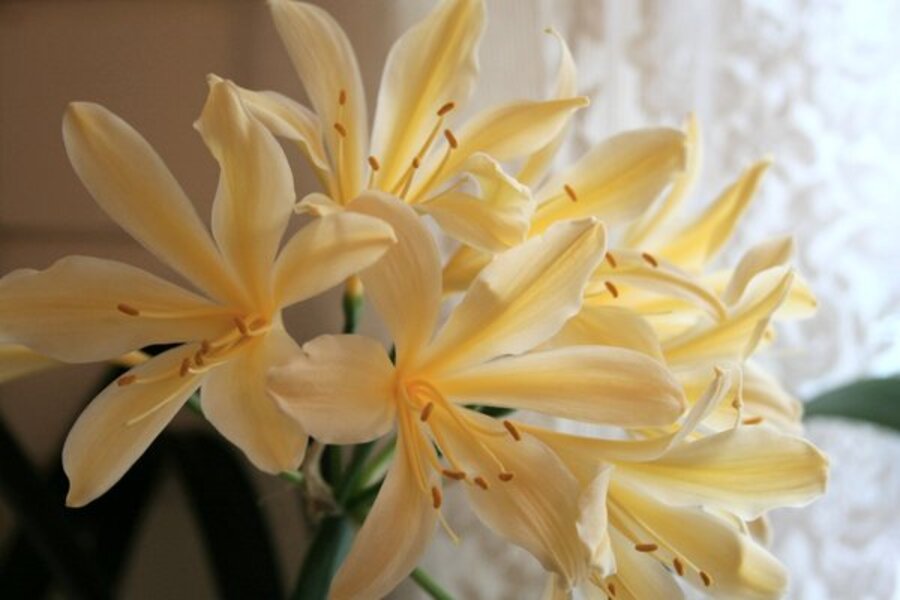Yellow clivias are cheery flowering houseplants
Loading...
The only houseplant I remember being on Grandma's windowsill is clivia. I never saw her do anything to it, but it always looked healthy. And, oh, the flowers! But I never bought one myself because I don't like the color orange.
So, when breeders managed to produce yellow-flowering clivia, I just had to have it. That was in 2008.
In 2009, my plant produced a small yellow bump stuck so far down in the leaf clump that you couldn't see it without standing directly over the plant and examining it with a magnifying glass. I don't think that qualified as a flower.
Finally, blooms worth waiting for
But this year, it took a little more than a month from the time a flower stalk emerged until the plant reached its full, magnificent bloom. Checking its daily progress gave me something to look forward to during those dreary cabin-fever-filled days when it was too dangerous to venture out onto the glacial ice cap that covered our backyard.
And now I'm wondering whether my Golden Dragon clivia (Clivia miniata flava 'Golden Dragon') simply had to mature a bit longer before it threw forth such a spectacular blossom, or if its flowering was triggered instead by the additional light reflecting off the three-month-long snow cover.
Either way, the dramatic plume, which opened one flower at a time, was worth the wait.
Yellow clivias are somewhat expensive, but buy the largest plant you can afford because it can take three to six years for seedlings to bloom, usually sometime between February and May.
I've heard that a plant must have at least 14 leaves in order to flower. While I haven't found documentation to support that, my plant does have 17 leaves.
What clivias like
Clivia is an undemanding plant that is related to amaryllis, but prefers much less light and will sunburn easily. Keep it in a north window, or separated from a sunny window by a thin curtain. If you move your clivia outdoors for the summer, put it on a covered porch or in full shade.
Similar to the care of amaryllis, clivias must be kept cool for a couple of months in late autumn and early winter to start the formation of flower buds. Remember to let the soil dry out completely between waterings. The plant's large, fleshy roots store water, so they won't be harmed. They respond well to being pot-bound, which also helps to induce flowering.
You'll find more detailed information on general clivia care at:
The North American Clivia Society
White Flower Farm's growing guide
-----
Lois de Vries, a popular speaker at regional flower shows and garden clubs, writes from her home in rural northwestern New Jersey. To read her other posts at Diggin' It, click here. She's a field editor for Better Homes and Gardens and Country Gardens magazines and has been a contributing editor for other national publications. She was awarded the Jefferson Presidential Award for public service in environmental work. Click here and here to read about her garden design and environmental ideas and her holistic approach to gardening.You can also follow her on Twitter and Facebook






